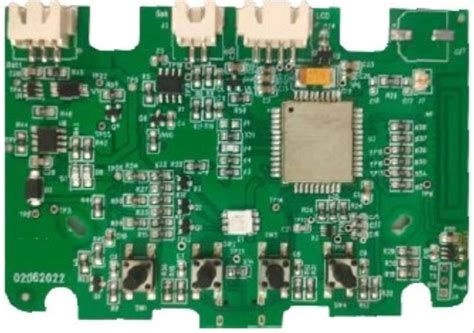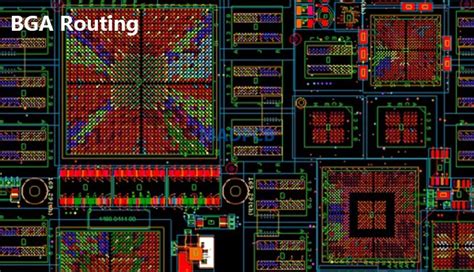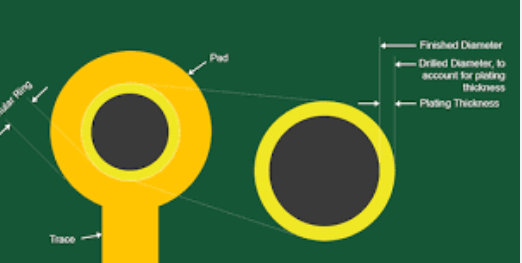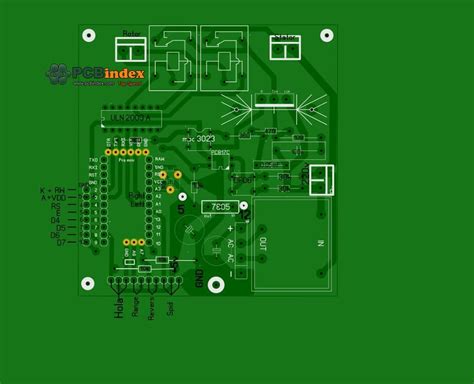Flex pcb overmolding
Advantages Of Flex PCB Overmolding In Modern Electronics
Flex PCB overmolding has emerged as a pivotal innovation in the realm of modern electronics, offering a multitude of advantages that enhance both the functionality and durability of electronic devices.
As electronic components continue to shrink in size while increasing in complexity, the demand for more robust and reliable solutions has never been greater. Flex PCB overmolding addresses these needs by providing a protective layer that not only safeguards the delicate circuitry but also contributes to the overall performance of the device.
One of the crucial advantages of flex PCB overmolding is its ability to provide superior protection against environmental factors.
Electronic devices are often exposed to harsh conditions, including moisture, dust, and extreme temperatures. Overmolding creates a sealed barrier around the flexible printed circuit board, effectively shielding it from these potentially damaging elements. This protection is particularly crucial in applications where reliability is paramount, such as in automotive, aerospace, and medical devices. By preventing the ingress of contaminants, overmolding extends the lifespan of the device and reduces the likelihood of failure.
In addition to environmental protection, flex PCB overmolding enhances the mechanical strength of electronic assemblies.
The overmolding process involves encasing the flexible circuit in a durable material, which provides additional support and reduces the risk of mechanical damage. This is especially beneficial in applications where the device is subject to frequent bending or flexing, as the overmolded layer helps distribute mechanical stress more evenly across the circuit. Consequently, this reduces the likelihood of circuit breakage and ensures consistent performance over time.
Moreover, flex PCB overmolding offers significant design flexibility, allowing engineers to create more compact and lightweight devices.
The overmolding process can be precisely controlled to conform to the specific shape and contours of the circuit, enabling the integration of complex geometries without compromising on performance. This capability is particularly advantageous in the development of wearable technology and portable electronics, where space is at a premium and weight reduction is a critical consideration. By facilitating more efficient use of space, overmolding contributes to the miniaturization of electronic devices, a trend that continues to drive innovation across various industries.
Furthermore, the overmolding process can enhance the electrical performance of flexible PCBs.
By providing a uniform dielectric layer, overmolding can improve signal integrity and reduce electromagnetic interference (EMI). This is particularly important in high-frequency applications where signal clarity is essential. The ability to maintain signal integrity while minimizing EMI is a key factor in the development of advanced communication devices and high-speed data transmission systems.
In conclusion, flex PCB overmolding offers a range of advantages that are instrumental in advancing modern electronics. By providing robust environmental protection, enhancing mechanical strength, offering design flexibility, and improving electrical performance, overmolding addresses many of the challenges faced by engineers in the development of next-generation electronic devices. As technology continues to evolve, the role of flex PCB overmolding in ensuring the reliability and efficiency of electronic components is likely to become even more significant, paving the way for continued innovation and progress in the field of electronics.

Key Considerations For Successful Flex PCB Overmolding
Flex PCB overmolding is a sophisticated process that involves encapsulating flexible printed circuit boards (PCBs) with a protective material, typically a type of plastic or rubber. This technique is employed to enhance the durability, reliability, and performance of the PCBs, especially in environments that are harsh or demanding. As the demand for more robust electronic devices continues to grow, understanding the key considerations for successful flex PCB overmolding becomes increasingly important.
To begin with, one of the primary considerations in flex PCB overmolding is the selection of appropriate materials.
The choice of overmolding material is crucial as it directly impacts the flexibility, thermal stability, and chemical resistance of the final product. Common materials used include thermoplastic elastomers (TPE), silicone, and polyurethane. Each of these materials offers distinct advantages; for instance, TPE is known for its excellent flexibility and ease of processing, while silicone provides superior thermal and chemical resistance. Therefore, the selection should be based on the specific requirements of the application, taking into account factors such as operating temperature range, exposure to chemicals, and mechanical stress.
In addition to material selection, the design of the flex PCB itself plays a significant role in the overmolding process.
The layout and configuration of the circuit must be carefully planned to ensure that the overmolding does not interfere with the functionality of the PCB. This involves considering the placement of components, the routing of traces, and the overall geometry of the board. It is essential to maintain a balance between the flexibility of the PCB and the rigidity required for overmolding. Moreover, incorporating features such as strain reliefs and anchor points can help in distributing mechanical stress more evenly, thereby enhancing the durability of the overmolded assembly.
Another critical aspect to consider is the overmolding process parameters.
The process involves injecting the chosen material over the flex PCB, and parameters such as temperature, pressure, and injection speed must be meticulously controlled. These parameters can significantly affect the adhesion between the overmold and the PCB, as well as the overall quality of the encapsulation. For instance, excessive pressure or temperature can lead to warping or damage to the PCB, while insufficient pressure may result in poor adhesion and potential delamination. Therefore, optimizing these parameters is essential to achieve a successful overmolding outcome.
Furthermore, it is important to consider the testing and validation of the overmolded flex PCBs.
Rigorous testing should be conducted to ensure that the overmolded assembly meets the required performance standards. This includes testing for electrical functionality, mechanical integrity, and environmental resistance. By conducting thorough testing, potential issues can be identified and addressed early in the development process, thereby reducing the risk of failure in the field.
In conclusion, successful flex PCB overmolding requires careful consideration of several key factors, including material selection, PCB design, process parameters, and testing. By addressing these considerations, manufacturers can enhance the reliability and performance of their products, ultimately meeting the demands of increasingly challenging applications. As technology continues to advance, the importance of mastering the intricacies of flex PCB overmolding will only grow, making it a critical area of focus for those involved in the design and production of electronic devices.

Innovative Applications Of Flex PCB Overmolding In Wearable Technology
Flex PCB overmolding has emerged as a pivotal innovation in the realm of wearable technology, offering a multitude of benefits that enhance both functionality and durability. As wearable devices continue to gain popularity, the demand for more robust and versatile components has driven the development of advanced manufacturing techniques. Flex PCB overmolding, in particular, stands out due to its ability to integrate flexible printed circuit boards with protective materials, thereby creating a seamless and resilient interface between electronic components and the external environment.
One of the primary advantages of flex PCB overmolding in wearable technology is its capacity to improve the durability of devices.
Wearable gadgets, by their very nature, are subject to constant movement and environmental exposure. Traditional electronic components can be susceptible to damage from moisture, dust, and physical stress. However, by encapsulating flexible PCBs within a protective overmold, manufacturers can significantly enhance the resilience of these devices. This protective layer acts as a barrier against external elements, ensuring that the internal circuitry remains intact and functional over extended periods of use.
Moreover, flex PCB overmolding contributes to the miniaturization of wearable devices, a critical factor in the design and development of modern wearables.
As consumers demand more compact and lightweight gadgets, manufacturers are challenged to incorporate increasingly complex functionalities into smaller form factors. Overmolding allows for the integration of multiple components into a single, cohesive unit, reducing the need for additional housing or protective casings. This not only streamlines the design but also reduces the overall weight and size of the device, making it more comfortable and convenient for users to wear.
In addition to enhancing durability and enabling miniaturization, flex PCB overmolding also offers improved design flexibility.
The process allows for the creation of intricate shapes and structures that can conform to the contours of the human body. This adaptability is particularly beneficial in the development of wearable devices that require a close fit, such as fitness trackers, smartwatches, and medical monitoring equipment. By utilizing overmolding techniques, designers can create ergonomic and aesthetically pleasing devices that maintain a high level of functionality.
Furthermore, the integration of flex PCB overmolding in wearable technology facilitates the incorporation of advanced features such as sensors and connectivity modules.
As the Internet of Things (IoT) continues to expand, the ability to seamlessly integrate sensors and wireless communication components into wearable devices becomes increasingly important. Overmolding provides a reliable method for embedding these components within the device structure, ensuring consistent performance and connectivity. This capability is essential for applications that require real-time data collection and transmission, such as health monitoring and fitness tracking.
In conclusion, flex PCB overmolding represents a significant advancement in the field of wearable technology, offering numerous benefits that enhance the performance and appeal of these devices. By improving durability, enabling miniaturization, and providing design flexibility, overmolding addresses many of the challenges faced by manufacturers in this rapidly evolving industry. As wearable technology continues to advance, the innovative application of flex PCB overmolding will undoubtedly play a crucial role in shaping the future of these devices, ensuring they meet the ever-growing demands of consumers and the market.

Challenges And Solutions In Flex PCB Overmolding Processes
Flex PCB overmolding is a sophisticated process that involves encapsulating flexible printed circuit boards (PCBs) with a protective layer of material, typically a type of plastic or rubber. This process is crucial for enhancing the durability, reliability, and performance of electronic devices, especially those exposed to harsh environments. However, the overmolding of flex PCBs presents several challenges that manufacturers must address to ensure optimal results. Understanding these challenges and exploring potential solutions is essential for advancing the technology and its applications.
One of the primary challenges in flex PCB overmolding is maintaining the integrity of the flexible circuits during the overmolding process.
Flex PCBs are inherently delicate due to their thin and pliable nature, which makes them susceptible to damage from the high pressures and temperatures typically involved in overmolding. To mitigate this risk, manufacturers must carefully select materials and process parameters that are compatible with the flex PCB’s specifications. For instance, using low-pressure molding techniques and selecting thermoplastic materials with lower melting points can help preserve the structural integrity of the flex circuits.
Another significant challenge is ensuring proper adhesion between the overmold material and the flex PCB.
Poor adhesion can lead to delamination, compromising the protective function of the overmold and potentially exposing the circuit to environmental hazards. To address this issue, surface preparation is critical. Techniques such as plasma treatment or the application of adhesion promoters can enhance the bond between the overmold material and the flex PCB. Additionally, selecting materials with inherent adhesive properties can further improve the reliability of the overmolded product.
Thermal management is also a crucial consideration in flex PCB overmolding.
The encapsulation process can trap heat within the device, potentially leading to overheating and failure of the electronic components. To counteract this, manufacturers can incorporate thermally conductive materials into the overmold to facilitate heat dissipation. Moreover, designing the overmold with features such as heat sinks or vents can further enhance thermal management, ensuring the device operates within safe temperature ranges.
The complexity of flex PCB designs poses another challenge in the overmolding process.
As electronic devices become more advanced, the circuits themselves are becoming increasingly intricate, with multiple layers and components. This complexity requires precise control over the overmolding process to avoid damaging sensitive components or altering the circuit’s functionality. Advanced molding techniques, such as insert molding or multi-shot molding, can provide the precision needed to accommodate complex designs. These techniques allow for the strategic placement of overmold material, ensuring that critical areas of the flex PCB remain unaffected.
Finally, cost considerations cannot be overlooked in the flex PCB overmolding process.
The need for specialized materials, equipment, and techniques can drive up production costs, posing a challenge for manufacturers seeking to maintain competitive pricing. To address this, manufacturers can explore cost-effective alternatives, such as optimizing material usage or investing in automated processes that reduce labor costs. Additionally, collaborating with material suppliers to develop custom solutions tailored to specific applications can result in more efficient and cost-effective overmolding processes.
In conclusion, while flex PCB overmolding presents several challenges, innovative solutions and advancements in technology continue to drive progress in this field. By addressing issues related to material compatibility, adhesion, thermal management, design complexity, and cost, manufacturers can enhance the performance and reliability of overmolded flex PCBs, paving the way for their expanded use in a wide range of applications.







